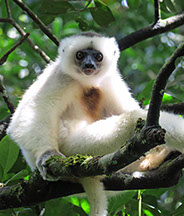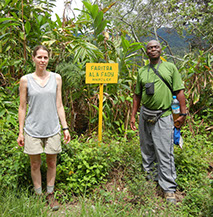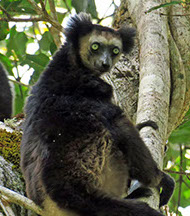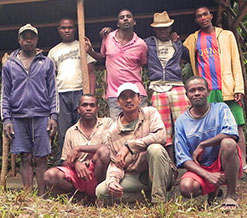
Madagascar
The Lemur Conservation Foundation partners with scientists and conservationists on the ground in Madagascar. A large island nation (bigger than California or France) off the southeast coast of Africa, it is one of the world’s hottest biodiversity hotspots, and the only place where lemurs are found naturally. LCF is a managing member of the Madagascar Fauna and Flora Goup (MFG), an international consortium of zoos working together to conserve Madagascar's spectacular wildlife and their habitats through field research, conservation breeding, technical advice and training to Malagasy institutions and biologists.
Supported Reserves on the Island
For ten years LCF supported the Protected Area of Tampolo. With a Nature’s Path Organic Foods award, LCF contributed to building a museum and interpretative center, a guesthouse for visiting scientific researchers, and a classroom/community center.
LCF is now supporting Anjanaharibe-Sud Special Reserve (ASSR). Nominated as a UNESCO World Heritage Site, this large 280 sq km (108 square miles) mountainous rainforest reserve supports at least 11 species of lemurs, including critically endangered black indri and silky sifakas, which are one of the rarest mammals in the world.
Poverty and political instability have undermined Madagascar’s environmental management. Slash and burn agriculture, selective logging of precious wood (rosewood/ebony), and fuel wood harvesting has accelerated deforestation and erosion, which in turn has altered microclimates, leading to droughts, forest fires, and soil degradation. Bushmeat hunting of lemurs has also increased in recent years due to a lack of alternative protein sources in rural villages as well as the emergence of a commercial bushmeat trade.
LCF’s educational outreach in both Madagascar and the United States emphasizes that the fates of lemurs and their human neighbors are bound together.
Activities that LCF currently supports at ASSR include:
- Development of Camp Indri, the first permanent tourist and research infrastructure in ASSR
- Lemur population surveys and habitat assessments
- Population, Health, and Environment Programs (PHE)
- Reforestation
- Sustainable agricultural training
- Environmental education
- Improved boundary demarcation
- Promotion of fuel-efficient stoves
- Support for Madagascar National Parks (Andapa)
- Support and training of Malagasy university students
- Support of Antanetiambo Nature Reserve
Madagascar’s Challenges
Although stunningly rich in biodiversity, Madagascar is also exceptionally poor in almost every quality-of-life measure tracked by the United Nations and World Bank. Population is exploding, and most Malagasy live on less than $1 per day.










